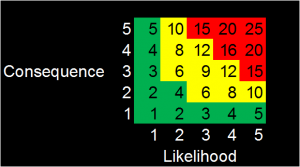Over the last two decades practicing as an ISO 14001 auditor, consultant, and teacher, I have found that many individuals and organizations misunderstand the intent and meaning of the terms “significant environmental aspect” and “significant environmental impact.” With the revision to ISO 14001:2004 well under way, perhaps now is a good time to attempt introducing language or definitions into ISO 14001:201x that will help individuals and organizations better understand the term “significant”, and the distinction between the terms “aspect,” and “impact.” Such clarity would enable individuals and organizations to better interpret what exactly must be done according to the standard. This confusion in meaning is understandable because, at least in the English language, there are several definitions or “senses” or “subsenses (meanings in specific contexts) of the term “significant.” The senses or subsenses that are applicable within the context of ISO 14001 can be found in the MerriamWebster Collegiate Dictionary (Tenth Addition) as follows:
2 a: having or likely to have influence or effect: IMPORTANT <a significant piece of legislation>; also: of a noticeably or measurably large amount <a significant number of layoffs> <producing significant profits>
In order to fully comprehend this definition, you need to refer to the Explanatory Chart and Explanatory Notes at the beginning of the dictionary, which describe the meaning of the numbers (2), something called a “sense number”; the small letters (a), which are “sense letters”; the colon (:), which is used to separate two or more definitions of a single sense; and the italicized word “also,” which is called a “sense divider” and is used to introduce a meaning that is closely related to but may be considered less important than the preceding sense. If a capitalized word is used to define a sense of the word, that capitalized word, in this case IMPORTANT, is defined as a synonym of the term being defined.
The sense number 2 definition of the term “significant” has several subsenses with different meanings. One of these subsenses means “important.” The other means “a noticeably or measurably large amount.” What has happened over the years with the interpretation of ISO 14001 is that many individuals and organizations have applied only the second subsense of the term – “a noticeably or measurably large amount,” – when they are determining which environmental aspects they consider significant. They ignore the other, and arguably more important, subsense of the term – “IMPORTANT.”
The effect on an organization’s Environmental Management System of only considering the part of the definition of “significant” that means “a noticeably or measurably large amount“ has been that an organization typically excludes from its list of significant environmental aspects those that are “important” to them for reasons other than their being “a noticeably or measurably large amount”. This typically includes environmental aspects for which the organization has established operational controls (work instructions) to ensure that the environmental impact of the significant environmental aspect is controlled to the level desired by the organization.
An example might be waste light bulbs, batteries, and other electronic waste. Although most organizations have procedures for ensuring that these wastes are properly recycled (work instructions or procedures), many do not identify these wastes as significant environmental aspects because they believe the presence of the operational control has reduced the potential impact from these wastes to a point where they do not constitute a “noticeably large amount.” They do not apply the other subsense of the word “significant” with the meaning “important.” Proper management of waste light bulbs is obviously important to the organizations because they have established a procedure (operational control) for ensuring that they are managed in a certain way.
The unfortunate consequence of not including waste light bulbs as a significant environmental aspect is that this important environmental aspect then becomes transparent to the management system. The organization’s performance toward ensuring that waste light bulbs are managed correctly is not routinely measured or audited during internal or other system audits.
To correct this problem the US TAG should consider adding the following definitions to ISO 14001:201x:
3.xx significant environmental aspect The cause of a significant environmental impact
3.xx significant environmental impact The potential or actual environmental effect or risk caused by a significant environmental aspect that an organization intends to manage or is managing through operational controls and/or environmental objectives, targets, and programs
The definition of significant environmental impact above includes reference to “risk,” which is meant to address the risk to the organization, including potential regulatory noncompliance. The result of including the word “risk” in the definition is that organizations controlling an environmental aspect to manage a potential risk of noncompliance will need to identify that environmental aspect as “significant.” Close attention should also be paid to the way in which the terms “significant environmental aspect” and “significant environmental impact” are used in the standard to avoid confusion between these terms. The use of the term significant environmental impact” should be limited compared to the use of the term significant environmental aspect. The term significant environmental impact should be used only in the section of ISO 14001:201x addressing identification of environmental aspects.
Kevin A. Lehner, EMS-LA, CHMM – January 11, 2013

![652px-Logo-ISO[1]](http://envcompsys.com/wp-content/uploads/2013/12/652px-Logo-ISO1-300x276.jpg)
